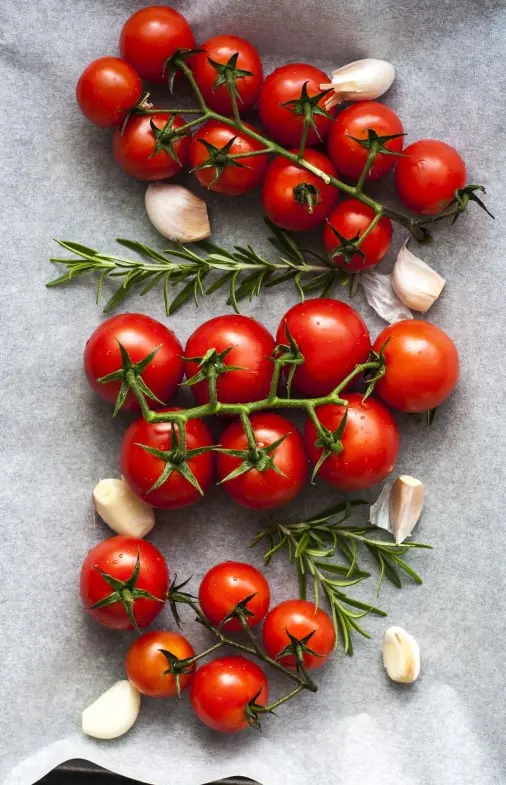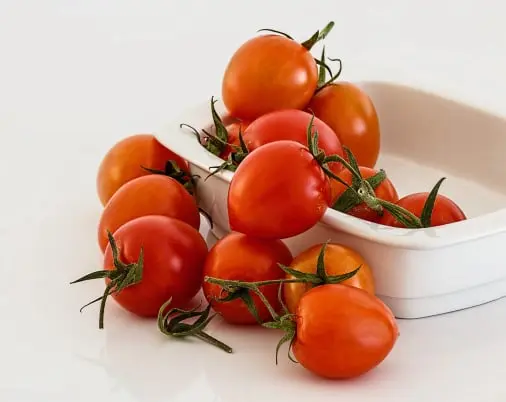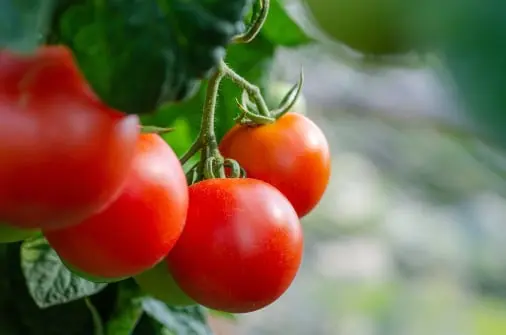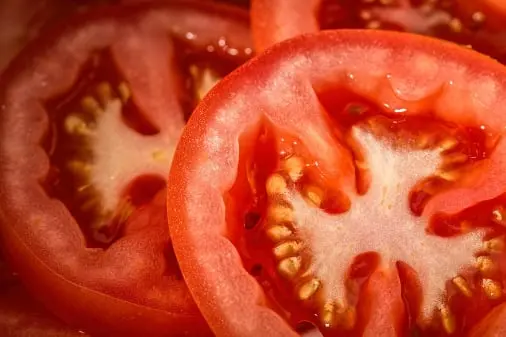Tomato quality inspection app with AI Quality Management:
Tomato quality inspection app with AI quality tests for packing and processing fresh tomato. Increase tomato quality, reduce waste, reduce QC testing costs, increase quality inspection consistency. Reduce quality negotiation time with suppliers and customers.

Tomato Quality inspections during production
View App Specifications.
Tomatoes are in high demand because the world population consumes them daily. This research aims to improve tomato production and fruit quality through fruit measurement methods, which have a low impact factor on the fruit and plant during measurements. In the present paper, we present a review of the main attributes, such as color, ripening rate, firmness, shape, size and composition, that determine tomato fruit quality for final consumers; we also overview the methods (invasive destructive and invasive nondestructive) currently used to evaluate these attributes. The future trend in attribute analysis involves the development of portable, low-cost devices that take images directly from crops in the field to instantly determine quality characteristics.

Daily Tomato packhouse hygiene checklist
Maintaining high potassium and nitrogen levels in the fruit will minimize blotchiness and greenback problems in fruit.
Potassium and nitrogen are important for aroma. Too much ammonium-N adversely affects taste.
Potassium is the main nutrient affecting the quality of the tomato, improving the uniformity of ripening, shape, acidity and taste of the fruit.
High levels of calcium are important in maintaining firmness and preventing damages due to disorders or during handling and transportation.
Maintaining high levels of calcium in the root zone and throughout the plant, minimizing the impact of competing cations such as ammonium, will reduce BER incidence.

Tomato Quality control
Tomato quality is a multi-faceted trait, involving many processes at the plant and fruit level, which depend on interactions between cultural practices, genetic and environmental factors. This review focusses on tomato quality as influenced by pre-harvest factors, and quality is defined from the consumer’s point of view, i.e. through fruit size or fresh mass, colour, taste, flavour, texture and health value. Tomato is a model plant for biologist and the second fruit consumed worldwide. The mechanisms involved in tomato fruit quality have been extensively investigated by physiologists and geneticists, and the responses to climatic and cultural practices have been widely described.

Tomato Supplier quality inspection
Assessing wine grape quality parameters using plant traits derived from physical model inversion of hyperspectral imagery
However, the high quality of tomato is mainly related to the redness of the color and the intensity of the taste. The taste and color of the tomato, on the other hand, are determined by the sugar content of the fruit. Research has shown that when the sugar content of tomato is at its peak then the skin of the fruit gets the strongest and most intense red color due to the dominance of the pigment called lycopene.
The quality characteristics of tomato fruits are determined mainly by color, texture and flavor. These characteristics are directly related to both the variety and the method of cultivation as well as the conditions under which it is carried out.